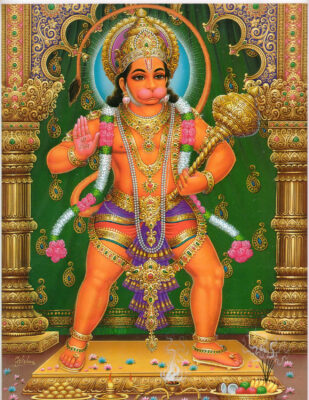 In Sanskrit he is more appropriately called हनुमत् (hanumat) which means “one having mighty jaws” indicating the power to bite and hold on to the task – a symbol of determination. He is vānara (monkey) and one of the most celebrated of a host of divine ape-like beings, created by the blessings of Nārada, to become the allies of Śrī Rāma in his war with Rāvaṇa.
In Sanskrit he is more appropriately called हनुमत् (hanumat) which means “one having mighty jaws” indicating the power to bite and hold on to the task – a symbol of determination. He is vānara (monkey) and one of the most celebrated of a host of divine ape-like beings, created by the blessings of Nārada, to become the allies of Śrī Rāma in his war with Rāvaṇa.
Multiple Jayanti
Jayanti refers to the celebration associated with any deity in Hinduism. It is a birthday, but the Hindu have several birthdays – one is their birth in a lunar calendar called Janma Tithi while another is a solar calendar which is in some sort of sync with the Gregorian calendar.
Aṅjanī-suta Hanuman
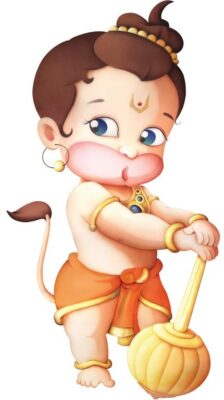 Mārgaśira Amāvāsya Jayanti
Mārgaśira Amāvāsya Jayanti
The first jayanti is the janma tithi. Tithi refers to the jala tattva in pañcāṅga which resonates with the mother. Celebration of one’s janma tithi is really a mark of respect for one’s mother who not only passed through nine months of carriage but also the pangs of labour and all the sacrifices and unconditional love to see us become fit for life on earth.
Śrī Hanuman was born in the month of Mārgaśira (Dec-Jan nowadays) in Amavasya tithi (Kṛṣṇa pakṣa). Therefore the first jayanti which is the janma tithi is celebrated in Mārgaśira K30 amāvāsya. Tamil Nadu and Kerala are known to celebrate this date as the Hanuman jayanti.
His mother name was Aṅjanī, an incarnation of the fabled Mahāvidyā Bagalāmukhī, the mother of ‘Mars’. It is believed that whosoever calls Hanuman through his mother shall be granted unquestioned protection, even if he is pursued by the infallible arrow of Rama! Here is that powerful mantra for this shield of Hanuman. It is the real kavaca in Kali Yuga.
om namo bhagavate ānjaneyāya mahābalāya svāhā|
Vāyuputra Hanuman
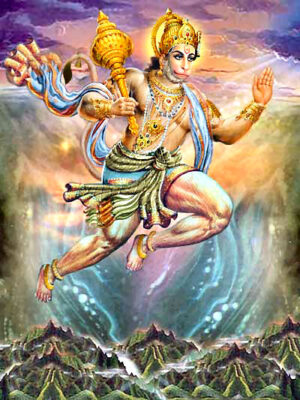 Mārgaśira Mūla Nakṣatra Jayanti
Mārgaśira Mūla Nakṣatra Jayanti
The second birth called dvija, is the receiving of the sacred thread or a mantra that initiates them into religious life as a Hindu. This is the second Jayanti. The mantra is the protector and giver of long life. In jyotiṣa longevity is associated with the wind (breath, prāṇa) and in the pañcāṅga, the breath is in the janma nakṣatra. Now while Hanuman was born in Mārgaśira Kṛṣṇa Amāvāsya tithi, the Moon was also in mūla nakṣatra. This nakṣatra is the janma nakṣatra of Hanuman. Janma nakṣatra is associated with the prāṇa (life-force) and father who sacrifices his prāṇa to infuse life into the baby. Celebration of one’s birthday on the janma nakṣatra is carried out in various traditions for long life and blessings of lineage.
Hanumat was a son of Pavana (Māruta, the Wind god). By virtue of his birth and accomplishments, he had various siddhi including the capacity to assume any form at will, removed mountains, fly like a bird by leaping across huge lengths in the air, jump into and seize the clouds, and rivalled Garuda in flight. Other people of Tamil Nadu worship Hanuman on Mūla nakṣatra day with the “vāyuputra” mantras:
om vāyuputrāya namaḥ
However both father and mother can be worshipped if the Mārgaśira amāvāsya also happens to be Mūla nakṣatra:
om ānjaneyāya vidmahe vāyuputrāya dhīmahi tanno hanumat pracodayāt|
Śrī Guru Hanuman
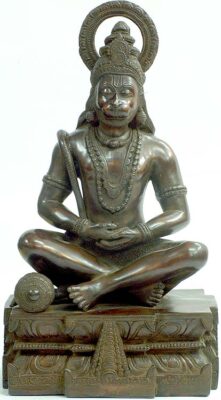 Chaitra Pūrṇimā Jayanti
Chaitra Pūrṇimā Jayanti
The third birth is the date of enlightenment, which happens only for a very few who are destined to become world teachers. These are Gautam Buddha, Guru Nanak Dev, Hanuman, Dattātreya and Kṛṣṇa Dvaipāyana (Veda Vyāsa) etc., who birth into a new reality where they no longer have any association with their pasts and are fully enlightened. Hanuman Jayanti is also celebrated to commemorate this third birth of Hanuman as fully enlightened Guru. The date is the full-moon (pūrṇimā) of the month of Chaitra (Mar-Apr) called Chaitra Pūrṇimā. Tulsidas starts the famous Hanuman chalisa with the line “śrī guru charaṇa …” referring to this form of Hanuman as a great teacher of vedic knowledge. The mantra to worship him for vedic knowledge is the Hanu-mukha vedamūrti mantra:
hanumukha siddhirastu
Rāmadūta Hanuman
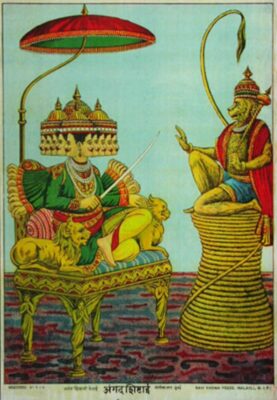 Vaisakha Saṅkrānti Jayanti
Vaisakha Saṅkrānti Jayanti
Yet another kind of Jayanti is the investment of a great responsibility like coronation of a king or the appointment as a prime minister. This is a new karma birth and is yet another jayanti. The date of coronation of the local king is used by all astrologers to mark the horoscopes of subjects as being born in so-and-so year and date of the kingship. Of these kings, the most important is Śrī Rama Himself and every year, the Chaitra Śukla Pratipada chart is drawn to determine what lord Rama wishes for the year. This is the chart applicable for the world and is drawn for different capitals. The moment of ingress of the new lunar year is the manifestation of Viṣṇu himself i.e. Rama. The first saṅkrānti following this Śukla Pratipada is the Vaisakha saṅkrānti or Meṣa (Aries) saṅkrānti when the Sun enters Aries. This is the date for the appointment of the Prime Minister for the year. Hanuman is the Prime Minister of Rama and hence this date of Meṣa saṅkrānti is celebrated in Odisha and some places as Hanuman Jayanti to commemorate Hanuman as the Prime Minister of Rama. They sing the rāmadūta gāyatrī –
om rāmadūtāya vidmahe vāyuputrāya dhīmahi| tanno hanumat pracodayāt
and repeat the rāmadūta mantra with bīja or without bīja – both forms given below:
om aiṁ hīṁ hanumate śrīrāmadūtāya namaḥ|ॐ श्रीरामदूताय हनुमते नमः।
om śrīrāmadūtāya hanumate namaḥ|
Rudra-avatāra Hanuman
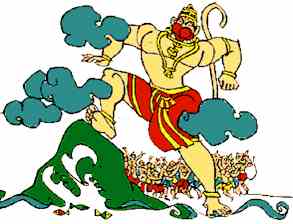 Aśvina Kṛṣṇa Caturdaśī Jayanti
Aśvina Kṛṣṇa Caturdaśī Jayanti
There is a moment when one suddenly awakens to one’s true calling. This happened when standing on the shores of south India, Hanuman knew that Rāvaṇa was across the ocean in Lanka and he had to ascertain the whereabouts of Sītā for sure. Hanuman awakens to his true calling and all his powers as being Rudra-avatāra are realised. He assumes a gigantic form and leaps into the air with a bone-chilling war dry in the name of Rama. The trees uprooted from the mountain follow him for a short distance. The entire description of this moment, given in the Ramayana, is very thrilling. There is no task which is impossible for him. This Rudra-avatāra jayanti is celebrated in Maharashtra on a day of Śiva – kṛṣṇa caturdaśī (K14) in the lunar month Aśvina. This is after Dusshera (navarātri).
He is an incarnation of Śiva as well as a son of Śiva in the sense of an avatāra – hence is is called ‘Rudra-avatāra’ and extolled as such in some mantras, particularly the 11-syllable mantra from Mahā-Nārāyaṇa Upaniṣad.
om haṁ rudrāya hanumate namaḥ
Pañca-Mukha Hanuman
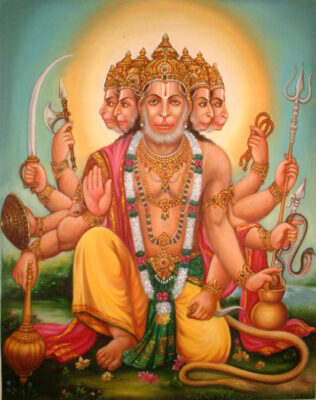 Vaisakha Kṛṣṇa Daśamī
Vaisakha Kṛṣṇa Daśamī
Knowledge, persistence and purity are the keys to success. This comes from the five faces of Hanuman as a complete incarnation of pañca-brahma-mūrti Sadāśiva. Various mantras for various kinds of knowledge relate to the five-faced Hanuman which is like the five-faced Śiva (pañca-brahma-mūrti). The tenth day is always celebrated for success and in particular the tenth day of the Aśvina māsa is celebrated as Dusshera when Durgā killed Mahiśasura or Rama killed Rāvaṇa.
Vaisakha kṛṣṇa daśamī gives various mantra siddhi and the pañca-mukha Hanuman is particularly worshipped for protection from black magic, evil spirits and ghosts. In parts of Uttar Pradesh, Uttarakhand, Odisha and middle India, this is prevalent. The mantras given below should be learnt from an able teacher.
Mūla Pañca-mukha Mantra
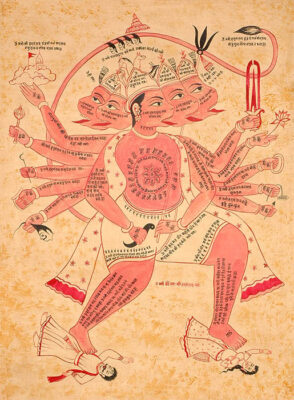
om harimarkaṭāya svāhā
These five mantras can be done for the correction of the five tattva of the trimsamsa which brings various evils upon us. The mantra is in the tattva order: agni, pṛthvi, vāyu, jala and ākāśa.
ॐ नमो भगवते पञ्चवदनाय पूर्वकपिमुखाय सकलशत्रुसंहारकाय स्वाहा।
om namo bhagavate pañcavadanāya pūrvakapimukhāya sakalaśatrusaṁhārakāya svāhā |
ॐ नमो भगवते पञ्चवदनाय दक्षिणमुखाय करालवदनाय नरसिंहाय सकलभूतप्रमथनाय स्वाहा।
om namo bhagavate pañcavadanāya dakṣiṇamukhāya karālavadanāya narasiṁhāya sakalabhūtapramathanāya svāhā |
ॐ नमो भगवते पञ्चवदनाय पश्चिममुखाय गरुडाननाय सकलविषहराय स्वाहा।
om namo bhagavate pañcavadanāya paścimamukhāya garuḍānanāya sakalaviṣaharāya svāhā |
ॐ नमो भगवते पञ्चवदनायोत्तरमुखायादिवराहाय सकलसम्पत्कराय स्वाहा।
om namo bhagavate pañcavadanāyottaramukhāyā divarāhāya sakalasampatkarāya svāhā |
ॐ नमो भगवते पञ्चवदनायोर्ध्वमुखाय हयग्रीवाय सकलजनवशङ्कराय स्वाहा।
om namo bhagavate pañcavadanāyordhvamukhāya hayagrīvāya sakalajanavaśaṅkarāya svāhā |
Kara-nyāsa Mantra
ॐ अञ्जनीसुताय अङ्गुष्ठाभ्यां नमः।
om añjanīsutāya aṅguṣṭhābhyāṁ namaḥ |
ॐ रुद्रमूर्तये तर्जनीभ्यां नमः।
om rudramūrtaye tarjanībhyāṁ namaḥ |
ॐ वायुपुत्राय मध्यमाभ्यां नमः।
om vāyuputrāya madhyamābhyāṁ namaḥ |
ॐ अग्निगर्भाय अनामिकाभ्यां नमः।
om agnigarbhāya anāmikābhyāṁ namaḥ |
ॐ रामदूताय कनिष्ठिकाभ्यां नमः।
om rāmadūtāya kaniṣṭhikābhyāṁ namaḥ |
ॐ पञ्चमुखहनुमते करतलकरपृष्ठाभ्यां नमः।
om pañcamukhahanumate karatalakarapṛṣṭhābhyāṁ namaḥ |
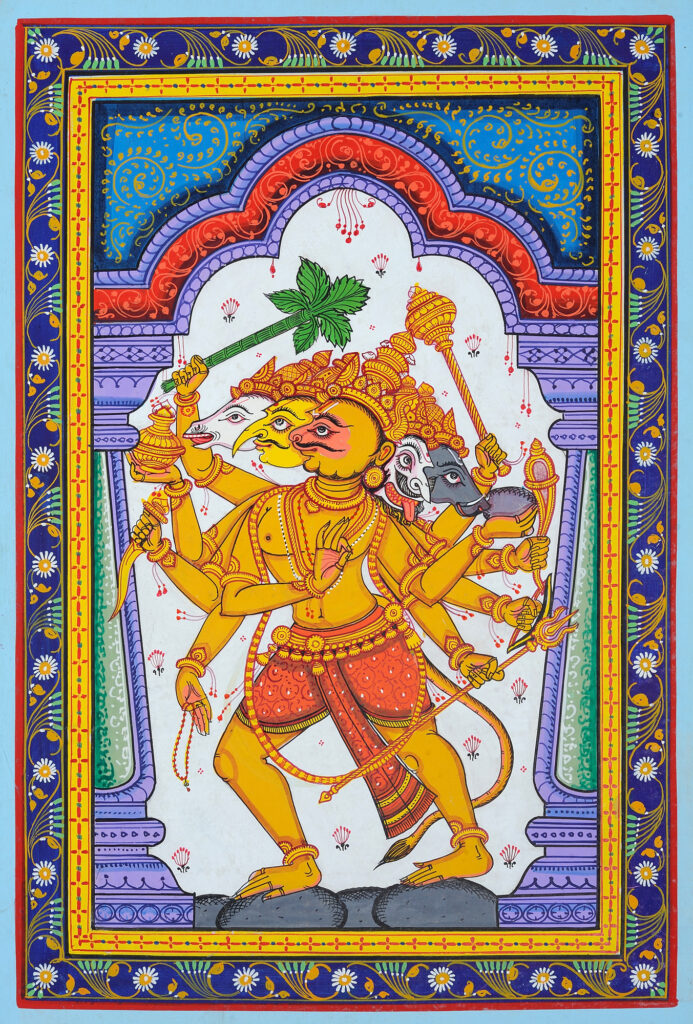 Dig-bandha mantra
Dig-bandha mantra
ॐ अञ्जनीसुताय हृदयाय नमः।
om añjanīsutāya hṛdayāya namaḥ |
ॐ रुद्रमूर्तये शिरसे स्वाहा।
om rudramūrtaye śirase svāhā |
ॐ वायुपुत्राय शिखायै वषट्।
om vāyuputrāya śikhāyai vaṣaṭ |
ॐ अग्निगर्भाय कवचाय हुम्।
om agnigarbhāya kavacāya hum |
ॐ रामदूताय नेत्रत्रयाय वौषट्।
om rāmadūtāya netratrayāya vauṣaṭ |
ॐ पञ्चमुखहनुमते अस्त्राय फट्।
om pañcamukhahanumate astrāya phaṭ |
पञ्चमुखहनुमते स्वाहा।
pañcamukhahanumate svāhā |
Dhyāna
वन्दे वानरनारसिंहखगराट्क्रोडाश्ववक्रान्वितं
दिव्यालङ्करणं त्रिपञ्चनयनं देदीप्यमानं रुचा।
हस्ताब्जैरसिखेटपुस्तकसुधाकुम्भाङ्कुशाद्रिं हलं खट्वाङ्गं
फणिभूरुहं दशभुजं सर्वारिवीरापहम्।
vande vānaranārasiṁhakhagarāṭkroḍāśvavakrānvitaṁ
divyālaṅkaraṇaṁ tripañcanayanaṁ dedīpyamānaṁ rucā |
hastābjairasikheṭapustakasudhākumbhāṅkuśādriṁ halaṁ khaṭvāṅgaṁ
phaṇibhūruhaṁ daśabhujaṁ sarvārivīrāpaham |
Pañca-Mukha Hanuman Prayoga Mantra
Viniyoga
ॐ श्रीरामदूतायाञ्जनेयाय वायुपुत्राय महाबलपराक्रमाय सीतादुःखनिवारणाय लङ्कादहनकारणाय महाबलप्रचण्डाय फाल्गुनसखाय कोलाहलसकलब्रह्माण्डविश्वरूपाय सप्तसमुद्रनिर्लङ्घनाय पिङ्गलनयनायामितविक्रमाय सूर्यबिम्बफलसेवनाय दुष्टनिवारणाय दृष्टिनिरालङ्कृताय सञ्जीविनीसञ्जीविताङ्गदलक्ष्मणमहाकपिसैन्यप्राणदाय दशकण्ठविध्वंसनाय रामेष्टाय महाफाल्गुनसखाय सीतासहित रामवरप्रदाय षट्प्रयोगागमपञ्चमुखवीरहनुमन्मन्त्रजपे विनियोगः।
om śrīrāmadūtāyāñjaneyāya vāyuputrāya mahābalaparākramāya sītāduḥkhanivāraṇāya laṅkādahanakāraṇāya mahābalapracaṇḍāya phālgunasakhāya kolāhalasakalabrahmāṇḍaviśvarūpāya saptasamudranirlaṅghanāya piṅgalanayanāyāmitavikramāya sūryabimbaphalasevanāya duṣṭanivāraṇāya dṛṣṭinirālaṅkṛtāya sañjīvinīsañjīvitāṅgadalakṣmaṇamahākapisainyaprāṇadāya daśakaṇṭhavidhvaṁsanāya rāmeṣṭāya mahāphālgunasakhāya sītāsahita rāmavarapradāya ṣaṭprayogāgamapañcamukhavīrahanumanmantrajape viniyogaḥ |
Dig-bandha
ॐ हरिमर्कटमर्कटाय बंबंबंबंबं वौषट् स्वाहा।
om harimarkaṭamarkaṭāya baṁbaṁbaṁbaṁbaṁ vauṣaṭ svāhā |
ॐ हरिमर्कटमर्कटाय फंफंफंफंफं फट् स्वाहा।
om harimarkaṭamarkaṭāya phaṁphaṁphaṁphaṁphaṁ phaṭ svāhā |
ॐ हरिमर्कटमर्कटाय खेंखेंखेंखेंखें मारणाय स्वाहा।
om harimarkaṭamarkaṭāya kheṁkheṁkheṁkheṁkheṁ māraṇāya svāhā |
ॐ हरिमर्कटमर्कटाय लुंलुंलुंलुंलुं आकर्षितसकलसम्पत्कराय स्वाहा।
om harimarkaṭamarkaṭāya luṁluṁluṁluṁluṁ ākarṣitasakalasampatkarāya svāhā |
ॐ हरिमर्कटमर्कटाय धंधंधंधंधं शत्रुस्तम्भनाय स्वाहा।
om harimarkaṭamarkaṭāya dhaṁdhaṁdhaṁdhaṁdhaṁ śatrustambhanāya svāhā |
ॐ टंटंटंटंटं कूर्ममूर्तये पञ्चमुखवीरहनुमते परयन्त्रपरतन्त्रोच्चाटनाय स्वाहा।
om ṭaṁṭaṁṭaṁṭaṁṭaṁ kūrmamūrtaye pañcamukhavīrahanumate parayantraparatantroccāṭanāya svāhā |
ॐ कंखंगंघंङं चंछंजंझंञं टंठंडंढंणं तंथंदंधंनं पंफंबंभंमं यंरंलंवं हंषंसंहं ळंक्षं स्वाहा।
om kaṁkhaṁgaṁghaṁṅaṁ caṁchaṁjaṁjhaṁñaṁ ṭaṁṭhaṁḍaṁḍhaṁṇaṁ taṁthaṁdaṁdhaṁnaṁ paṁphaṁbaṁbhaṁmaṁ yaṁraṁlaṁvaṁ haṁṣaṁsaṁhaṁ ḻaṁkṣaṁ svāhā |
Prayoga Mantra
East-Purva
ॐ पूर्वकपिमुखाय पञ्चमुखहनुमते टंटंटंटंटं सकलशत्रुसंहरणाय स्वाहा।
om pūrvakapimukhāya pañcamukhahanumate ṭaṁṭaṁṭaṁṭaṁṭaṁ sakalaśatrusaṁharaṇāya svāhā |
South-Dakṣiṇa
ॐ दक्षिणमुखाय पञ्चमुखहनुमते करालवदनाय नरसिंहाय ॐ ह्रां ह्रीं ह्रूं ह्रैं ह्रौं ह्रः सकलभूतप्रेतदमनाय स्वाहा।
om dakṣiṇamukhāya pañcamukhahanumate karālavadanāya narasiṁhāya om hrāṁ hrīṁ hrūṁ hraiṁ hrauṁ hraḥ sakalabhūtapretadamanāya svāhā |
West-Paścima
ॐ पश्चिममुखाय गरुडाननाय पञ्चमुखहनुमते मंमंमंमंमं सकलविषहराय स्वाहा।
om paścimamukhāya garuḍānanāya pañcamukhahanumate maṁmaṁmaṁmaṁmaṁ sakalaviṣaharāya svāhā |
North-Uttara
ॐ उत्तरमुखायादिवराहाय लंलंलंलंलं नृसिंहाय नीलकण्ठमूर्तये पञ्चमुखहनुमते स्वाहा।
om uttaramukhāyādivarāhāya laṁlaṁlaṁlaṁlaṁ nṛsiṁhāya nīlakaṇṭhamūrtaye pañcamukhahanumate svāhā |
Up-Urdhva
ॐ उर्ध्वमुखाय हयग्रीवाय रुंरुंरुंरुंरुं रुद्रमूर्तये सकलप्रयोजननिर्वाहकाय स्वाहा।
om urdhvamukhāya hayagrīvāya ruṁruṁruṁruṁruṁ rudramūrtaye sakalaprayojananirvāhakāya svāhā |
Always end prayoga with this mantra stated once
ॐ अञ्जनीसुताय वायुपुत्राय महाबलाय सीताशोकनिवारणाय श्रीरामचन्द्रकृपापादुकाय महावीर्यप्रमथनाय ब्रह्माण्डनाथाय कामदाय पञ्चमुखवीरहनुमते स्वाहा।
भूतप्रेतपिशाचब्रह्मराक्षसशाकिनीडाकिन्यन्तरिक्षग्रह परयन्त्रपरतन्त्रोच्चटनाय स्वाहा।
सकलप्रयोजननिर्वाहकाय पञ्चमुखवीरहनुमते श्रीरामचन्द्रवरप्रसादाय जंजंजंजंजं स्वाहा।
om añjanīsutāya vāyuputrāya mahābalāya sītāśokanivāraṇāya śrīrāmacandrakṛpāpādukāya mahāvīryapramathanāya brahmāṇḍanāthāya kāmadāya pañcamukhavīrahanumate svāhā |
bhūtapretapiśācabrahmarākṣasaśākinīḍākinyantarikṣagraha parayantraparatantroccaṭanāya svāhā |
sakalaprayojananirvāhakāya pañcamukhavīrahanumate śrīrāmacandravaraprasādāya jaṁjaṁjaṁjaṁjaṁ svāhā |
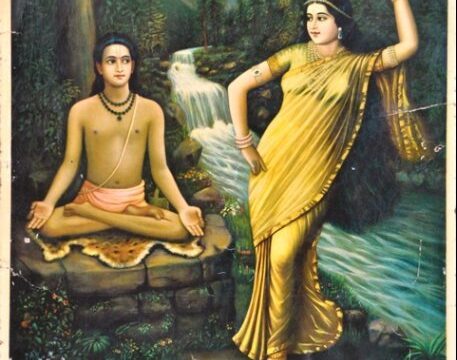
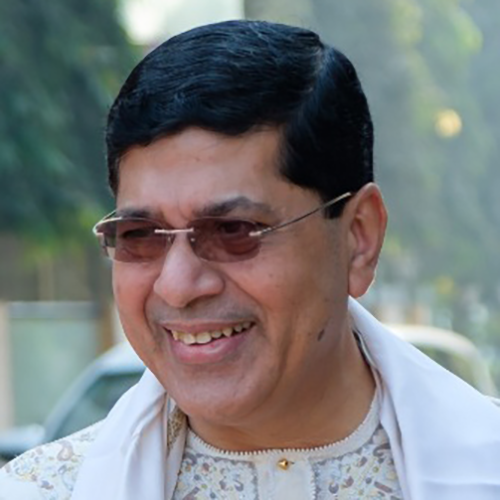
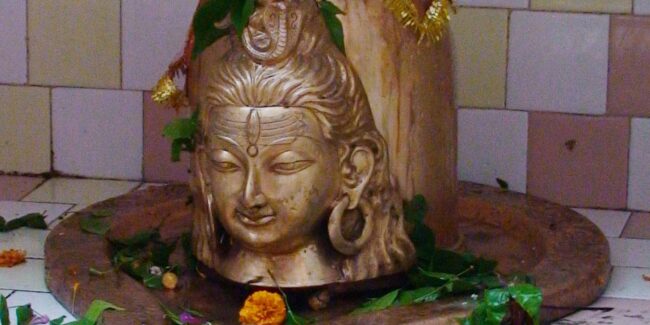
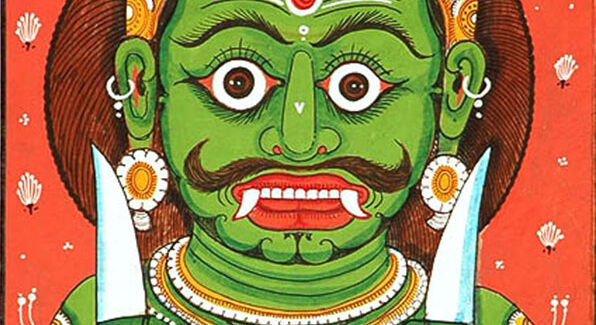
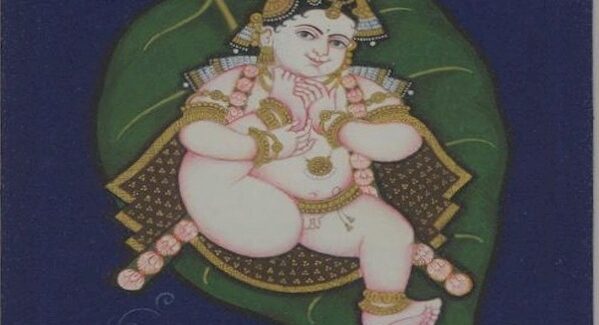
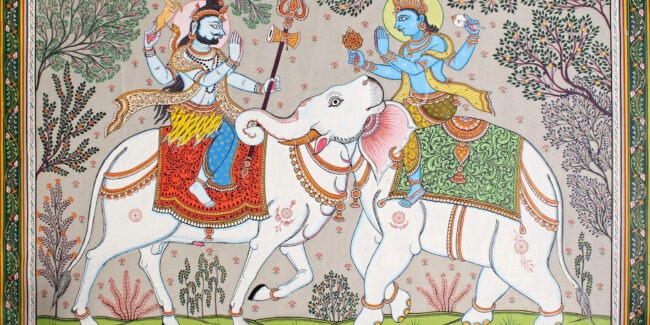
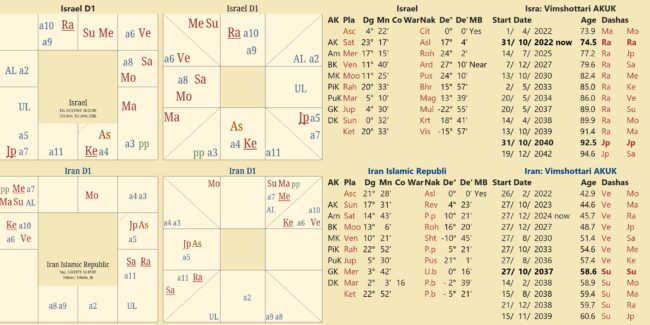
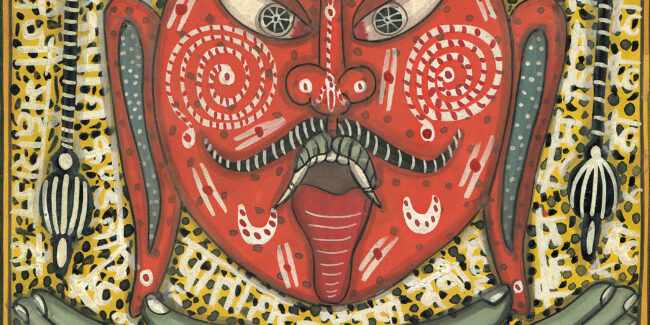

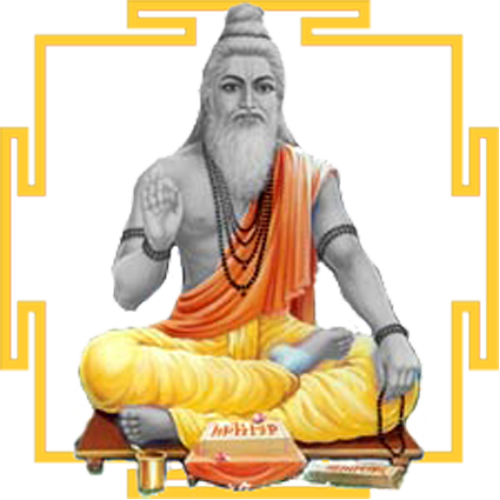 DBC offers online courses in jyotish (Vedic Astrology) taught directly by Sanjay Rath as per the tradition, through narrated power points and other audio tools. The courses are at different levels, from the beginners through the intermediate to the advanced and are known as SoHamsa | DBC courses, with individual classrooms and assistant teachers
DBC offers online courses in jyotish (Vedic Astrology) taught directly by Sanjay Rath as per the tradition, through narrated power points and other audio tools. The courses are at different levels, from the beginners through the intermediate to the advanced and are known as SoHamsa | DBC courses, with individual classrooms and assistant teachers
 Sagittarius Publications is the publisher and distributor the popular quaterly magazine the Jyotish Digest, as well as many thorough books on the subject of Vedic Astrology or Jyotish.
Sagittarius Publications is the publisher and distributor the popular quaterly magazine the Jyotish Digest, as well as many thorough books on the subject of Vedic Astrology or Jyotish.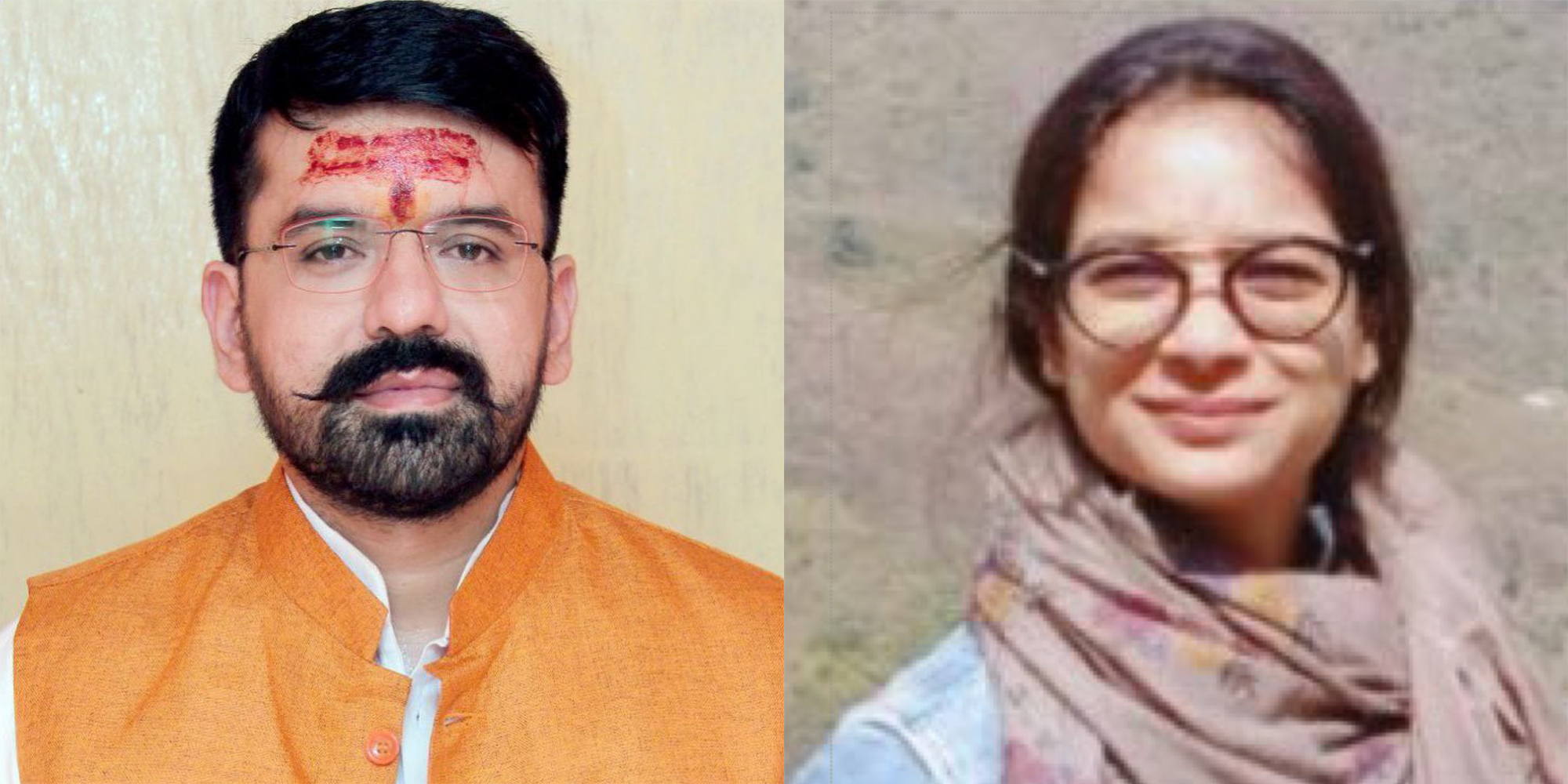 We have an excellent pandit Divākar ‘Deva’ Mishra, who is from the priests of Vindhyāvāsini Siddha Pīṭha to guide you through the hundreds of temples of Kāśi [Varanasi] and neighbouring regions. He can organise your pūjā, keep you safe and take care. He is supported by an English-speaking well-travelled spouse ‘Supriya Mishra’. Please contact them directly for any services, remedial pūjā and tours. They handled the 60+ member Kāśi Jyotiṣa Group 2022.
We have an excellent pandit Divākar ‘Deva’ Mishra, who is from the priests of Vindhyāvāsini Siddha Pīṭha to guide you through the hundreds of temples of Kāśi [Varanasi] and neighbouring regions. He can organise your pūjā, keep you safe and take care. He is supported by an English-speaking well-travelled spouse ‘Supriya Mishra’. Please contact them directly for any services, remedial pūjā and tours. They handled the 60+ member Kāśi Jyotiṣa Group 2022.
Dear Sanjayji,
What would be a good Hanumat mantra for protection from Rahu and Saturn especially during Sade Saati..?
Om Anjaneyaya Vidmahe, Vayuputraya Dheemahi. Tanno Hanumat Prachodayat
Dear Sanjay,
Is this mantra good for protection against Rahu and Saturn?
om namo bhagavate ānjaneyāya mahābalāya svāhā
Thank you!
Steve
No, it is very good for protection from the burning Sun
Sanjay Sir should be recognized by the Government of India for his unparalled contribution in spreading Vedic Jyotish ……
|| Om Gurave Namah ||
Dear Guruji,
I got the following chart for Lord Hanuman, I will like to have your teachings on this,
Lord Hanuman (Moola Nakshatra)
Lagna, Mars = Aries
Jupiter = Leo
Venus,Rahu,Mercury = Virgo
Sun,Moon = Sagittarius
Saturn = Capricorn
Ketu = Pisces
(The above chart was provided for worship by an astrologer to someone I know)
http://sanjayprabhakaran.blogspot.in/2015/04/horoscope-for-lord-rama-and-lord-hanuman.html
http://en.wikipedia.org/wiki/Elongation_%28astronomy%29
Mercury is more that 28degree away from this chart, so maybe some correction is needed?
Please give your opinion.
Warm Regards,
Sanjay P
Yes that chart of Hanumanji is correct. His amsha-avatara is Tulsidas also born in Moola Nakshatra.
Sanjay Prabhakaran, just one small correction from jyotish viewpoint – Mercury and Venus are both in roga-sthana, but that is not sixth, it is eighth house. Roga-sthana can also be the 6th, but in this case it does not render chart perfectly. Else everything else is perfect.
Om Gurave Namah..there is this story of how the prasad (of the putra kamesthi yagna by Dasaratha) was snatched from Sumitra by a bird and Pavan Dev ensured it fell on the meditating Anjana Devi…since this happned after Ram Navami..the subsequent pournami is celebrated as Hanuman Jayanti…Could you Sir please comment on this?
excellent article
So much there is and so little we know! Had no idea about the multiple jayantis – we usually observe it on Mahavisubha Sankranti. Thank you Bhaina for this very enlightening piece on this most beloved of Gods.
Wonderful gift on hanuman Jayanti.
a write up with exceptional clarity, thanks a lot!